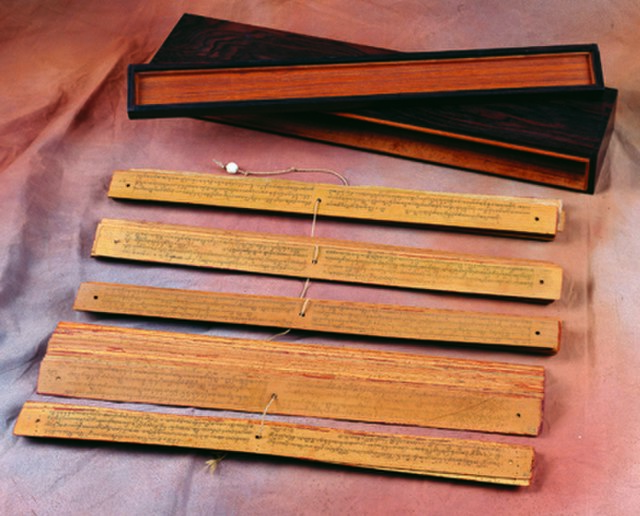Baris dance is a family of traditional war dances in Bali, Indonesia, accompanied by gamelan, in which dancers depict the feelings of a young warrior prior to battle, glorify the manhood of the triumphant Balinese warrior, and display the sublimity of his commanding presence. Baris derives its name from the word bebarisan, which literally means "line" or "file formation", referring to the soldiers who served the ancient rajas of Bali.
A baris tunggal dancer
Baris dance performance
Image: COLLECTIE TROPENMUSEUM Portret van drie speerdansers op een tempelcomplex op Bali T Mnr 10003685
Image: COLLECTIE TROPENMUSEUM Ceremoniemeesters uit Lombok in dienst van de vorst van Bali. T Mnr 60002155
Gamelan is the traditional ensemble music of the Javanese, Sundanese, and Balinese peoples of Indonesia, made up predominantly of percussive instruments. The most common instruments used are metallophones and a set of hand-drums called kendang, which keep the beat. The kemanak, a banana-shaped idiophone, and the gangsa, another metallophone, are also commonly used gamelan instruments on Bali. Other notable instruments include xylophones, bamboo flutes, a bowed string instrument called a rebab, and a zither-like instrument called a siter, used in Javanese gamelan. Additionally, vocalists may be featured, being referred to as sindhen for females or gerong for males.
A gamelan player playing bonang. Gamelan Yogyakarta style during a Javanese wedding.
Gamelan musical instrument
Musicians performing musical ensemble, The 8th century bas-relief of Borobudur Temple, Central Java, Indonesia
Gamelan is mentioned in the Kakawin Nagarakertagama in a palm-leaf manuscript called lontar that was written by Mpu Prapanca in 1365 AD. A collection of National Library of Indonesia in Jakarta








